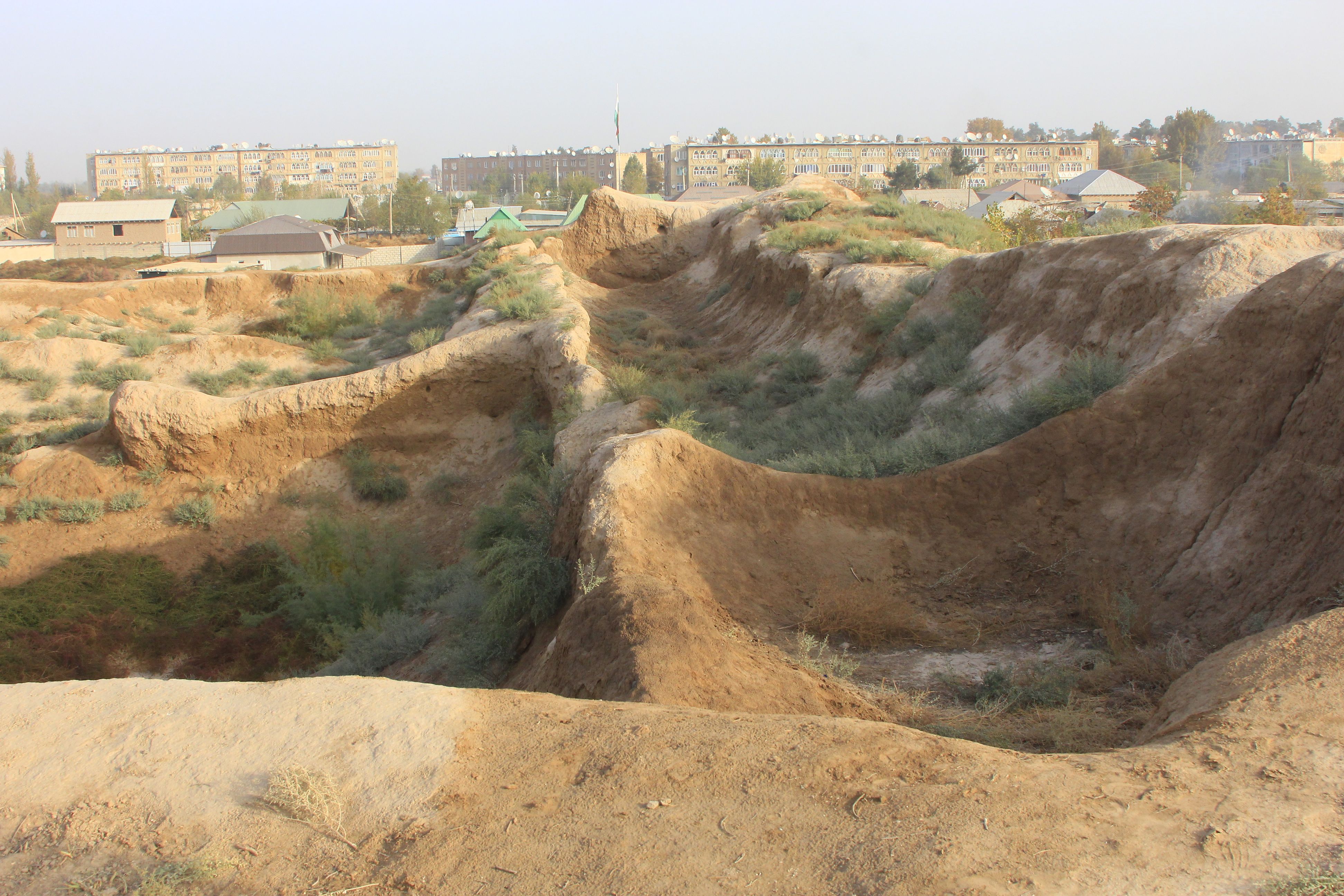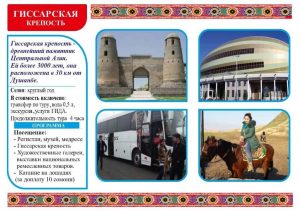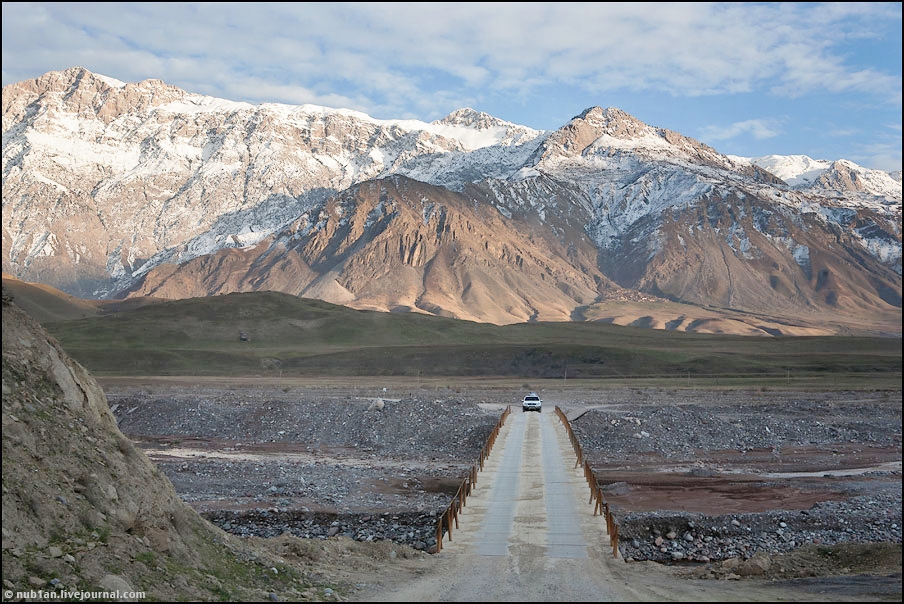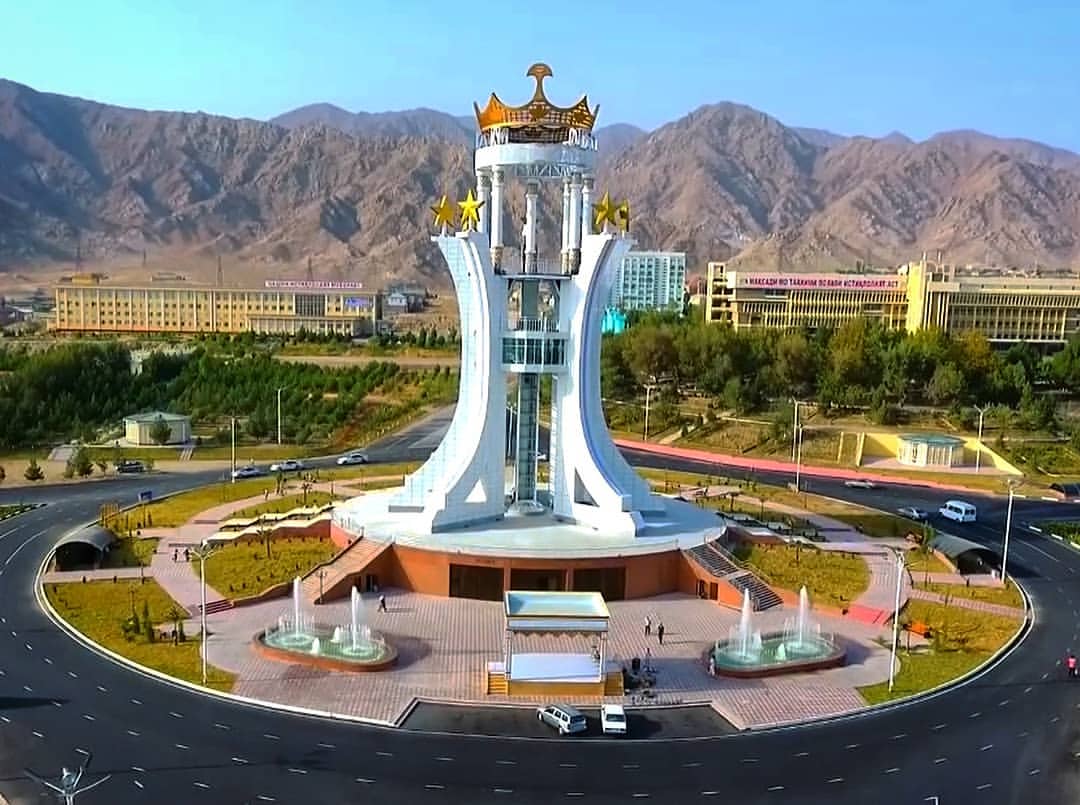Kofir Qala is located at the western outskirt of the centre of Jaloliddini Balkhi district. The district is located 32 km far from the city of Bokhtar, which is the center of Khatlon province. The citadel of Kafir Qala was reportedly built in 1-3 century and functioned till the 8th century. According to historians, Kofirqala was the administrative centre of Wakhsh region during the Middle Ages. In historical sources, this place is known with the name of Halevard, Helovard, Halavard and Halovard. The word Halevard consist of two connected words, i.e., ‘hale – scattered’ and ‘vard – palace (like a red flower). This conclusion about the name of the city was due to the fact that a poorly preserved pottery was found there during archaeological investigation. The Arabic inscription this potter contained the word Halvard. Chinese Buddhist missionary and monk Xunguang travelling from India to China through Central Asia at around 644 of CE referred to Halevard as an administrative centre and flourishing Buddhist city in the Wakhsh province. The Arabs seized the city and destroyed Buddhist deities.

They named site as the fortress of infidels, i.e., Kofir Qa’la and even attached to the water channel that runs near the fort. It was called Korif -kanal (the channels of the infidels). Archaeologists believe that the city of Haleward was completely destroyed during the second Arab invasion and that its inhabitants fled. At present Halevard is an official name of a council of villages (jamoati dehot) in the Jalloliddin Balkhi district. Halevard was a medieval city and administrative center of the Wakhsh province at the time Kushans. Since its destruction in the 8th century the city and citadel of Halewardwas almost forgotten. It came into the surface with the archaeological excavation of the Wakhs Valley in the Soviet period.
Architecture of the Site
The building of this fortress was a square area surrounded by walls and trenches. High towers were built on all four sides of the retaining walls, which were used for surveillance. This city of Haleward consisted of citadel, city, suburb, and cemetery. The western parts of the city were connected by a road that divided the city into two parts. Houses of nobles, and riches, offices existed in one part. Houses of the ordinary, and poor people existed in the other part of the city. Haleward was a fortified city surrounded by a thick defensive wall. It was also surrounded by a ditch, which was filled with the water. To the right, the city gates had a bridge, which was lifted at night, and during the attack of the enemy.

A huge citated a citadel with a square of and with a wall of 12 m high existed in the northeastern corner of the city. The citadel was an architectural complex which housed, ceremonial, residential and religious (Buddhist) buildings associated with the life of the ruler. The citadel was connected with shahristan (city) through a transition bridge. A small Budhist temple which was inside the palace is a manifestation of the construction skill in Tokharistan.
Discoveries in Kofir Qal’a
Archaeologist discovered many artefacts in this site. One of these recent discoveries included a piece of ceramics that belonged to the Graeko Bokhtar period. Another discovery were coins belonging to the period when the region was part of Tokharian rules. The most important, and interesting archaeological findings in this historical cite were portrait of the Budho in the temple, clay and ornamented vaultings, ancient literary works in the Hittite script.

The important and interesting discovery in Kafir Qala are the wall painting such as the fragment of the image of the Buddha’s head, fragment of the seated Buddhas, fragment depicting human hands, lotus flower, fragment with the image of an animal walking to the left, number of sealings and stamps, stamped ceramic relief of the donor, child and servant. These artefacts suggest that Kafir Qala is the richest site to represent the material culture of Central Asia, in particular Tokharistan in the medieval period. These designs and decorations were made for urban fortifications and magnificent walls, arches, trumpets, arches and domes.
Gallery






Travelling to the Site
The ruins of Kofir Qala are located not far from the centre of Jallolidin Balkhi district. This site can be easily reached by travelling on the route connecting Dushanbe-Dusti.Visitor can also travel to this site via the same route coming from Jaihun district. The road to travel to Dusti town is very good and open all year.




















